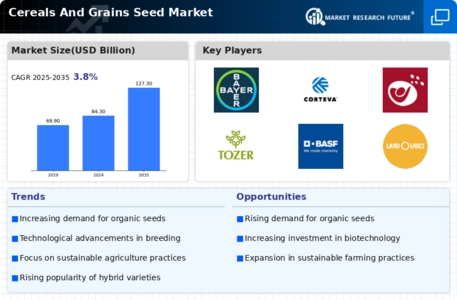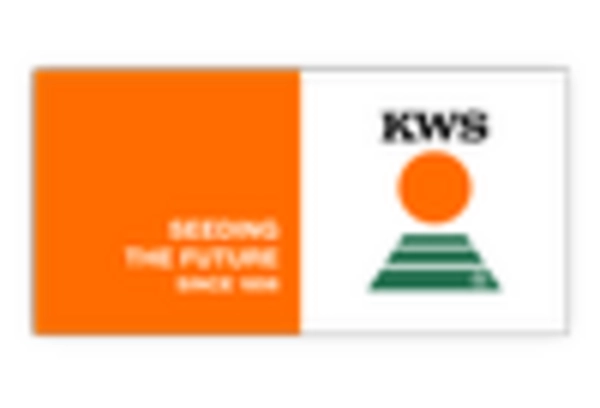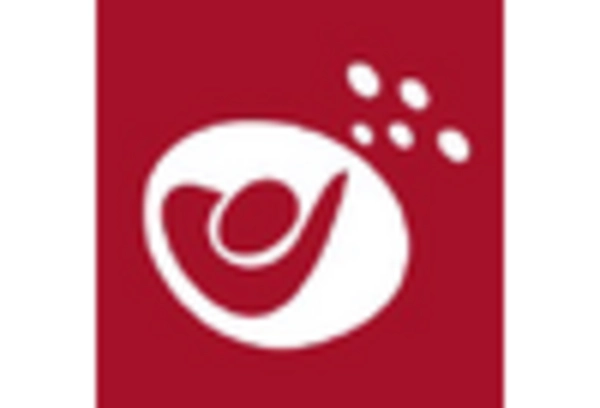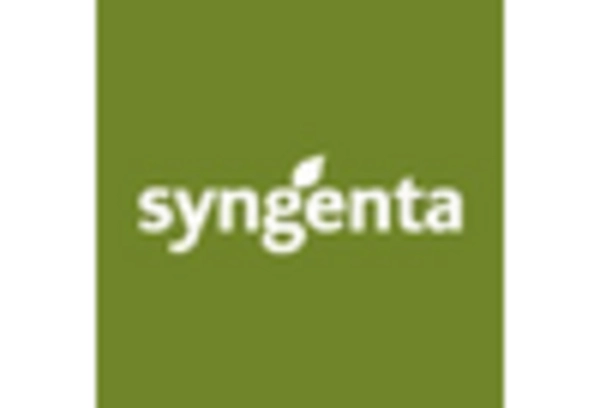Government Support and Subsidies
Government initiatives aimed at boosting agricultural productivity are significantly impacting the Cereals And Grains Seed Market. Various countries are implementing policies that provide financial support and subsidies to farmers for adopting improved seed varieties. These measures are designed to enhance food production and ensure economic stability in rural areas. For instance, funding for research and development in seed technology has increased, leading to the introduction of innovative seed solutions. Such government backing is likely to encourage farmers to invest in high-quality seeds, thereby driving growth in the Cereals And Grains Seed Market. The collaboration between public and private sectors is essential for fostering advancements in seed technology.
Adoption of Precision Agriculture
The integration of precision agriculture techniques is transforming farming practices, thereby impacting the Cereals And Grains Seed Market. Technologies such as GPS, drones, and data analytics enable farmers to optimize seed planting and crop management. This precision not only enhances yield but also reduces resource wastage, aligning with sustainability goals. According to recent data, the adoption of precision agriculture is expected to increase crop yields by up to 20%, which could significantly influence the demand for advanced seed varieties. As farmers increasingly rely on data-driven decisions, the Cereals And Grains Seed Market is likely to see a surge in the development of seeds tailored for precision farming.
Increasing Demand for Food Security
The rising global population, projected to reach approximately 9.7 billion by 2050, intensifies the need for enhanced food security. This demand drives the Cereals And Grains Seed Market as farmers seek high-yield and resilient seed varieties to meet nutritional needs. The industry is responding with innovative seed technologies that promise improved crop performance under varying climatic conditions. Furthermore, the emphasis on self-sufficiency in food production is likely to bolster investments in cereals and grains seed development, ensuring that agricultural practices can adapt to changing environmental challenges. As nations strive to secure their food supply chains, the Cereals And Grains Seed Market is positioned to play a pivotal role in addressing these challenges.
Climate Change Adaptation Strategies
The ongoing challenges posed by climate change necessitate the development of adaptive agricultural practices, which is influencing the Cereals And Grains Seed Market. Farmers are increasingly seeking seed varieties that can withstand extreme weather conditions, such as droughts and floods. This demand is prompting seed companies to invest in research focused on developing climate-resilient crops. Recent studies indicate that the market for drought-tolerant seeds is expected to grow by over 25% in the coming years. As the agricultural sector grapples with the realities of climate change, the Cereals And Grains Seed Market is likely to evolve, prioritizing the creation of seeds that can thrive in diverse environmental conditions.
Rising Awareness of Nutritional Benefits
There is a growing awareness among consumers regarding the nutritional benefits of various cereals and grains, which is influencing the Cereals And Grains Seed Market. As health-conscious individuals seek whole grains and nutrient-rich cereals, farmers are encouraged to cultivate varieties that meet these demands. This trend is reflected in the increasing market share of whole grain products, which has seen a rise of approximately 15% in recent years. Consequently, seed developers are focusing on breeding programs that enhance the nutritional profile of cereals and grains. This shift not only caters to consumer preferences but also supports the overall growth of the Cereals And Grains Seed Market.


















Leave a Comment